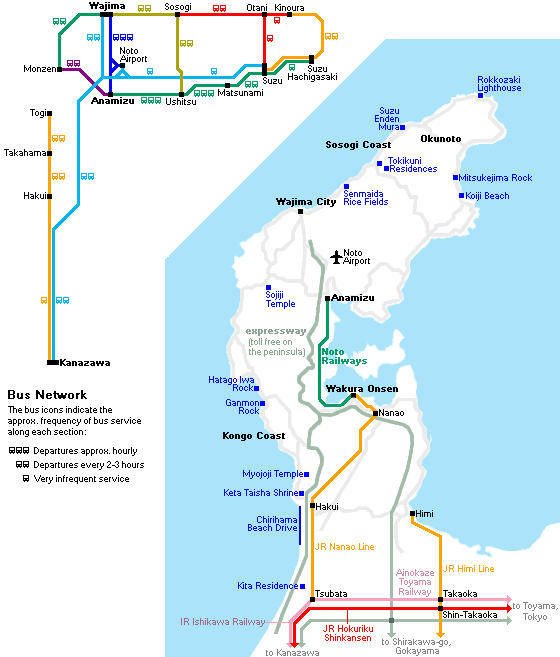Sojiji Temple

Located on the Noto Peninsula, Sojiji Temple (總持寺, Sōjiji) was once one of the most important temples of Zen Buddhism in all of Japan until its fortunes declined.
Sojiji Temple was founded in 1321, and received imperial support from the Emperor Go-Daigo. Alongside with Eiheiji Temple in Fukui Prefecture, Sojiji was one of the two head temples of the Soto sect, one of the two main sects of Zen Buddhism, and at one point oversaw more than 16,000 temples across the country. In 1898 Sojiji suffered a great fire and its functions as head temple were transferred to the Sojiji Temple in Yokohama. Some buildings did survive, though, and many of those that were destroyed were rebuilt.

Upon entering the temple grounds, visitors will pass by the Kyozo, a repository for Buddhist scripture. Afterwards, visitors cross the Hakuji Bridge which leads to the Sanmon Gate, the temple's main gate. The Sanmon Gate stands roughly 17 meters high and dates back to 1932.
After passing the gate, visitors enter the temple's main area, whose buildings encircle an inner courtyard with a small pond and some garden space. A circular route then leads through the various main buildings, including the Butsuden, the temple's main hall, and the Sodo, a meditation hall, both of which were built in the early 20th century. Another important building along the way is the Hatto, whose main object of worship is a statue of the temple's founder.

Getting there and around
Sojiji Temple is a short walk from Monzen Sojiji-mae (門前総持寺前) bus stop, the final stop of buses from Wajima (35 minutes, 760 yen, every 2-3 hours) and Anamizu (35 minutes, 690 yen, every 1-3 hours), the final station of the Noto Railway.
How to get to and around the Noto Peninsula

Hours and Fees
Hours
Closed
Admission
Typical Visit Duration
Questions? Ask in our forum.


